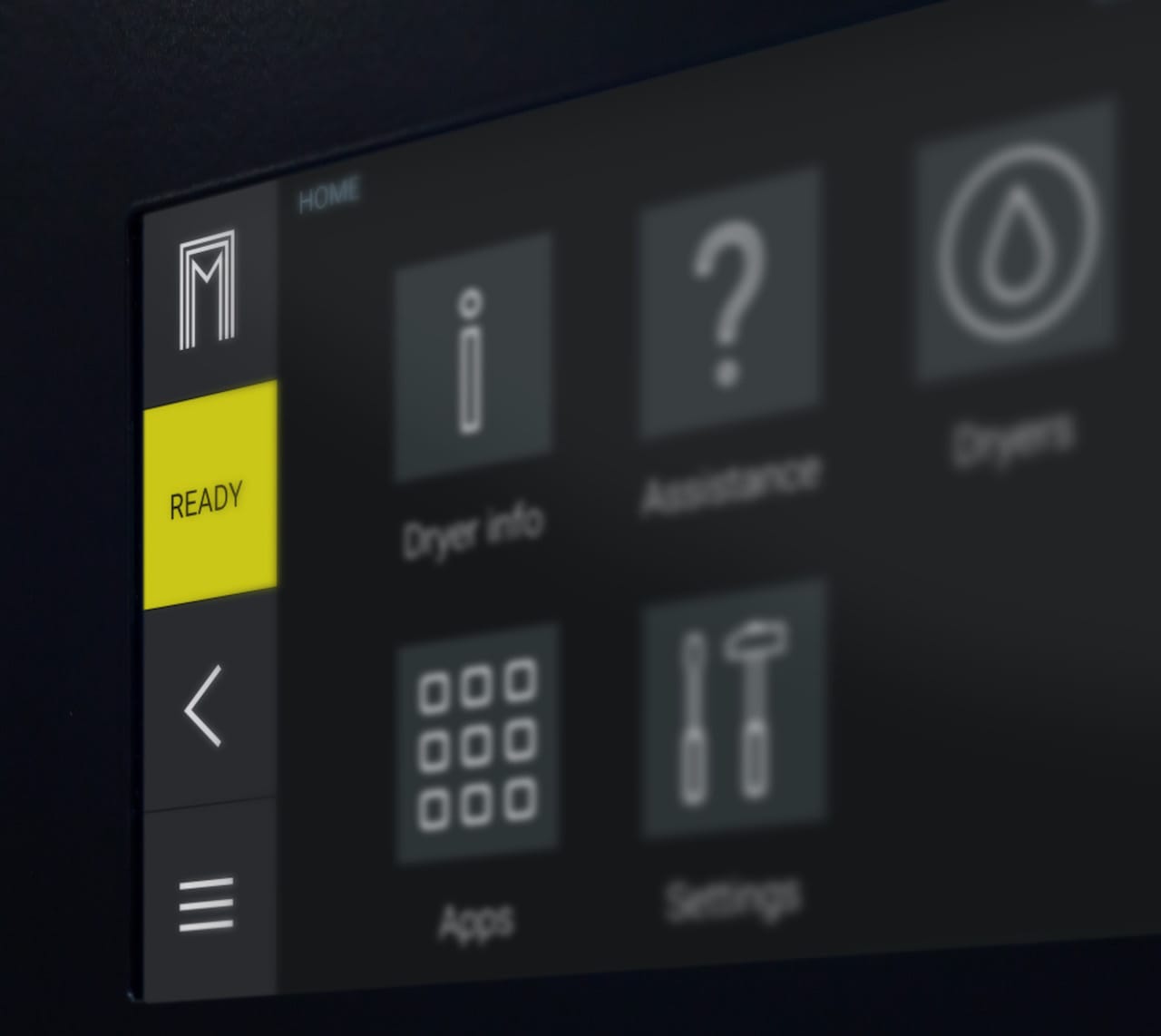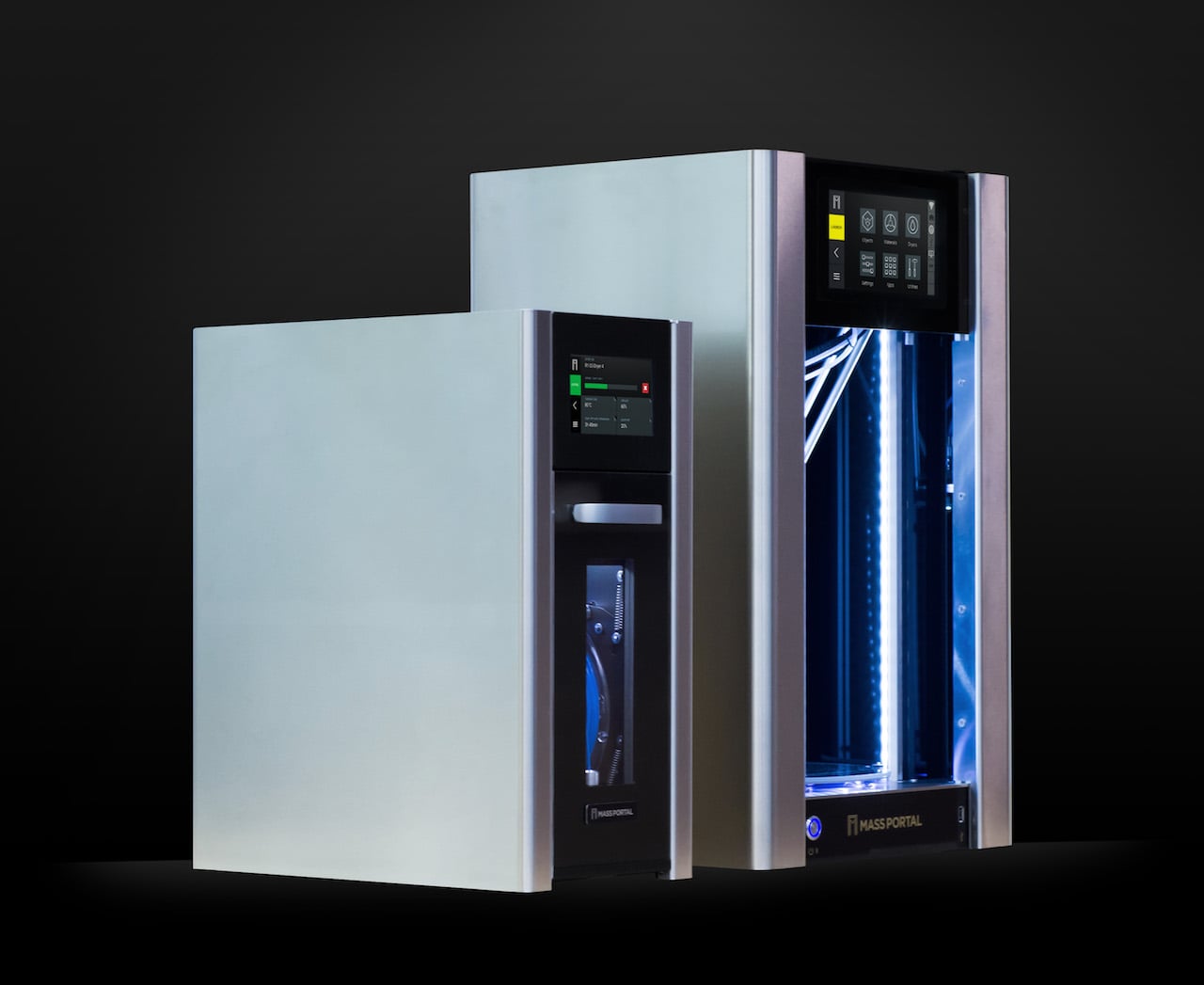
We obtained some additional information about the very interesting and brand new 3D printer filament drying system from Mass Portal.
Our previous story told of the introduction of this filament drying system, which is available in two sizes the 1kg spool FD1 and the 5kg spool capable FD5. The idea is that certain thermoplastics slowly absorb moisture from the air, which can result in degraded prints. The moisture can cause gaps, blobs and other irregularities during extrusion, and in extreme cases can possibly cause a print to fail.
Filament can also become brittle when exposed to the elements, making yet another failure scenario possible.
By carefully drying filament before its used you can maximize the probability of a successful and quality print. That’s a goal long sought by Mass Portal, whose equipment is well known for its exceptional quality and ability to 3D print very fine objects.
Our thought was that the company may have done as much as they could on the current printing technology, so they turned towards ensuring the input material was of optimum quality by offering a precision filament drying system.
What we didn’t know is the method of its operation. But now we know, thanks to some information from Mass Portal’s engineers.
While other filament drying systems tend to be passive; that is to say they have an enclosed chamber that’s sometimes heated slightly, and use desiccants to soak up moisture, Mass Portal have designed a more sophisticated process that uses air convection.

One of the problems with many other systems is that they depend on incoming air, which is often holding significant humidity, complicating the solution. It seems that Mass Portal’s system handles this by design. They explain:
The entrance fans suck in the ambient air, which then flows through electric heating coils and warms up. The filament reel is flowed by the hot air, and, thus, warms up (depending on the settings used it takes about 40 minutes to reach the maximum allowable temperature of 80 degrees Celsius). The water evaporating from the filament is then carried away from the drying chamber together with the flowing air.
This seems like a very sensible approach. But how does the moisture get removed? Again, their engineers explain:
To trap the water vapours contained in the ambient air (at room temperature the ambient air typically contains more than ten grams of water per cubic meter of air), Mass Portal introduced a rotating desiccant disc, through which the incoming ambient air is sucked in, and is dehumidified before it gets warm. Because the desiccant disc regularly rotates, it is partly regenerated, so one can operate the dryer in a continuous mode.
That’s very unusual, whereas some other simpler filament drying systems require you to replace the desiccant more frequently.
Finally, how long does it take to properly dry a spool of 3D printer filament?
The drying process typically takes 3-4 hours for a 1 kg reels, and it can be monitored by the weight changes in the material. For many feedstock materials drying allows to get not only a better cosmetic appearance of the printed parts (e.g. less stringing), and a better dimensional stability (e.g. less warping), but also a better interlayer adhesion, and, thus, mechanical strength. Moreover, there is a number of commercially available advanced feedstock materials (Nylons, PC, TPU), which can not be printed after a prolonged exposure to the ambient atmosphere.
This is very interesting: I did not realize that you could monitor moisture content through weight, but now that they mention it, it seems like an obvious approach.
The problem with weighing spools is that you must carefully track “before and after”. Simply taking a stock 1kg spool off the shelf doesn’t mean it contains exactly 1kg of material. That can vary by more than enough to throw off moisture calculations and is different from filament vendors.
It does not appear that the FD series includes a weighing system, but instead they seem to have pre-programmed drying sequences that assure you of receiving properly dried spools at program completion. But that would be an interesting feature for a future version.
Drying filament is often required, particularly if your equipment operates in humid conditions. If quality 3D print results are your goal, consider Mass Portal’s solution.
Via Mass Portal

